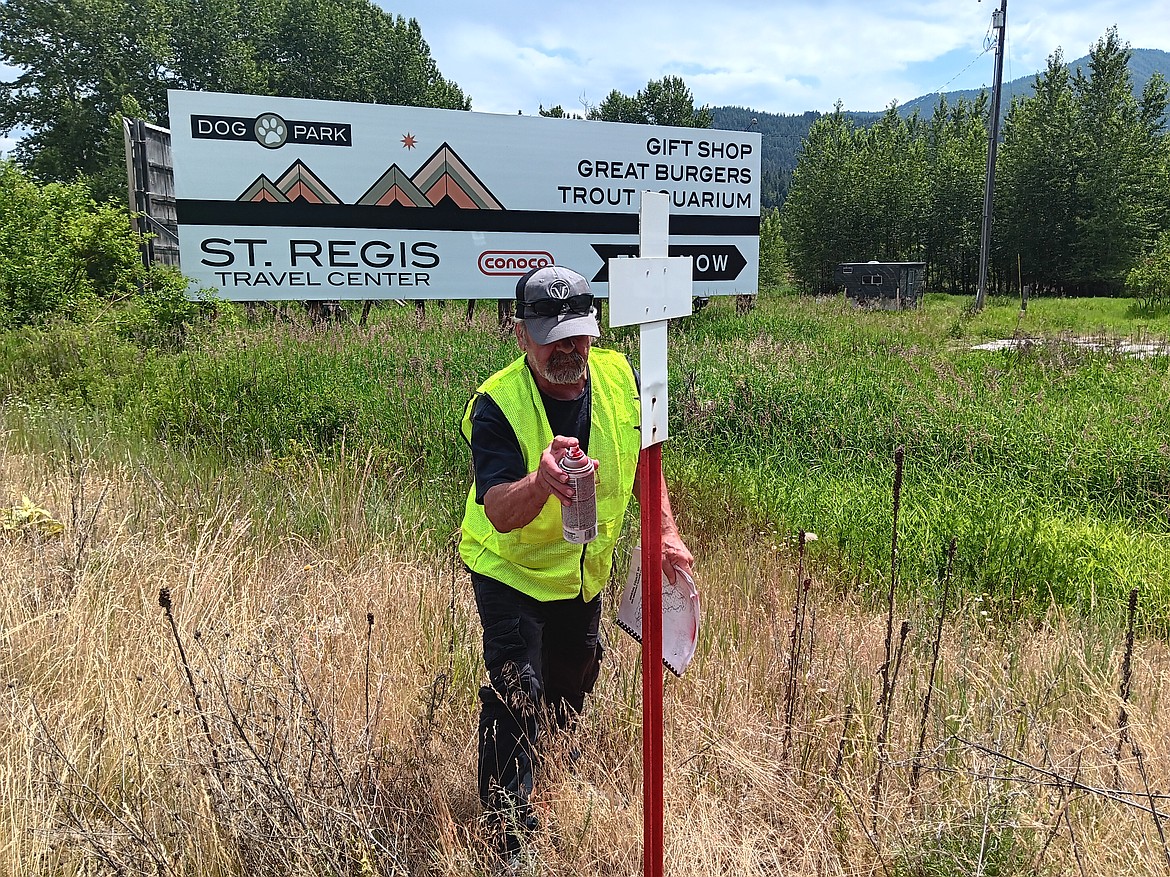Legion volunteers maintain highway crosses
For 72 years, white crosses have stood as silent sentinels along Montana highways as reminders of lives lost in traffic accidents and warnings to those who pass by to "please drive carefully."
These crosses are not religious symbols or personal memorials. They are highway fatality markers, a unique safety initiative maintained by local American Legion Posts across Montana.
The Montana American Legion White Cross Fatality Marker Program began in 1953.
The idea was born from tragedy: six lives lost in traffic accidents near Missoula over the 1952 Labor Day weekend. Floyd Eaheart of Hellgate Post 27 envisioned placing a white cross at each fatal accident site to serve as a stark reminder to drivers.
What began as a local safety initiative soon spread beyond Missoula. By January 1953, the Montana Highway Commission, with support from then Governor J. Hugo Aronson, officially adopted the program statewide. Louis Babb, Assistant Adjutant for the Department of Montana, was instrumental in persuading the Commission to back the project.
To this day, Montana remains the only state in the nation with a formal, state-sanctioned white cross highway fatality marker program, though many mistakenly believe it is a national initiative.
The program has operated continuously under evolving federal and state guidelines. Initially, a verbal agreement between the Highway Commission and the American Legion was sufficient. Today, the Montana Department of Transportation requires a formal agreement or permit for fatality marker placements. Private individuals are not permitted to place markers on highway rights-of-way.
In 2001, Montana Department of Transportation issued a Letter of Instruction to clarify the program’s guidelines. Among the strict requirements: Uniform use of specific red and white paint. Standardized height, post type (breakaway galvanized), and installation hardware. Minimum placement distance from the road.
Maintenance for upright positioning, especially after weather or collisions. Markers damaged by snowplows, weather, or subsequent accidents are repaired or replaced, often using recycled DOT signposts that have been cut and repurposed by American Legion volunteers.
White crosses are placed along state and federal highways, secondary roads, and even city streets. However, not all highway fatalities are marked. Some areas lack an American Legion Post to carry out the work and at the family’s request, one will not be marked as it may be too sensitive.
Though these crosses often stir emotional responses of grief, reverence, or curiosity — they are not intended as personal memorials. Still, some families attach wreaths or mementos, which will be removed or lowered around the red post to ground level to preserve visibility. Every cross symbolizes more than a number in a traffic report. Behind every fatality is a ripple of trauma: grieving families, friends, first responders, and entire communities. Even the volunteers who install the crosses carry a burden of empathy.
Each participating Post is assigned a geographic area and receives annual instructions for constructing and maintaining markers. No tax dollars are used; the program is funded and executed solely by American Legion volunteers. Rules now allow assistance to American Legion posts who are facing an aging membership with younger veterans not as willing or able to step up for volunteerism and public service, as every nonprofit organization has seen.
Meaning, church youth groups, high school civic organizations, scouting clubs and service-focused organizations like Kiwanis and Rotary are eligible to assist with the supervision of the local American Legion post.
Ray Welch American Legion Post 13 in St. Regis is responsible for the program in Mineral County which covers 77 miles of Interstate 90 and the first 8 miles of Highway 135 east to Sanders County.
Post Commander Vince Triplett recites the short subject line in the manual: “Numerous enough to notice, infrequent enough to startle," as he performs late season maintenance on some markers near mile marker 33 of I-90.
“We (Post 13) want this section to look extra sharp because if people are eastbound and cross the state line at Lookout Pass, our (fatality) markers are the first ones they see. It’s the beginning of the program and we want everyone of ours to be as straight as possible with a bright red post and a crisp white cross,” he said.
Since its inception, the program has placed an estimated 3,300+ white crosses along Montana roads, which is comparable to a 5-acre cemetery. It has garnered praise from the Montana Highway Patrol, Mothers Against Drunk Driving (MADD), and every Montana governor since 1953.
The White Cross Highway Fatality Marker Program is a powerful combination of public service, community care, and silent tribute. It reflects the Montana American Legion’s enduring commitment to safety and remembrance. It stands not just for a life lost, but as a call for caution, and a moment of reflection.

